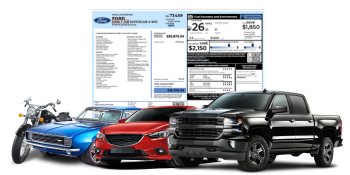A car’s out-the-door price (OTD) is the total of all the money you will pay when buying the car, including some required fees and taxes. Read on to learn the fees and taxes included in the OTD.
The OTD of a car is usually higher than the price you see on the vehicle window sticker because it includes other costs like dealer charges, sales taxes, and registration and title fees. Interestingly, this article will also discuss the differences between the OTD and MSRP (Manufacturer’s Suggested Retail Price).
When buying a car, it’s important to understand the out-the-door price of the car to get the best deal and ensure you stay within your auto budget. So read on to learn everything you need to know about a car’s out the door price.
READ ALSO: What Is the Cheapest Tesla MSRP You Can Buy?
Out the Door Price Meaning
Out-the-door price (OTD) is one of the car business terms you will encounter when buying a new or used car. It’s not wrong to say that the OTD is the total price you will pay to walk away with the car keys.
Sometimes, some of the additional fees included in an OTD can be removed, and you may end up paying less for a car than the total cost. Request all the fees included in a car purchase before the deal is finalized.
What is Included in the out-the-door price?
The out the door price includes a range of fees that add up to the final cost of your new car. They include the following fees:
- Car Price
- Destination charge
- Documentation fees
- Sales tax
- Vehicle title and registration
- Registration fees
- Dealership service fees
- Extra fees (e.g., an extended warranty or insurance fee)
When trading in a car or making a down payment, be aware that the costs are removed to determine the car’s out-the-door price. So, the total cost of owning a car differs from the out-the-door price, which usually includes other extras like insurance and auto loan interest.
When Do You Need to Know the Out the Door Price of a Car?
The out-the-door price of a vehicle provides a bigger picture of the car you’re buying, helping you know the true price of the car. The OTD is useful in the following scenarios:
When negotiating on a car
The staggering increase in car prices has left many dealerships disinclined to negotiate car prices, the door that is beginning to open up again.
Additional costs and fees can significantly increase the asking price by thousands. So never negotiate each fee separately, but ask the question, “What’s the out-the-door price?” can be your best bargaining strategy.
Negotiating a car’s out the door price can help:
- Avoid confusion about the different costs and fees.
- Uncover any hidden fees and additional costs.
- Protects you from any monthly negotiation which is the tactic at many dealerships.
- Avoid the temptation of buying or financing an expensive car.
- Set a budget and stick to it.
When shopping for a car online
Some online apps can be used to find and negotiate for a car without physically visiting the dealership. Nowadays, everything about buying a car can be finalized online except for testing the car.
Once you find a car you desire online, call or email the dealership to verify it is still available. If the price is close to the MSRP (manufacturer’s Suggested Retail Price), simply ask for the breakdown of the out-the-door price.
Repeat the procedures for other dealerships and compare their quotes. Ensure the total cost matches the out the door price you agree upon.
Out the Door Price vs MSRP: What's the Difference?
You will likely see the MSRP or sticker price when shopping for a car. This is the price that the automaker recommends and acts as a starting point for negotiation.
The MSRP is usually lower than the Out-the-door price. Don’t be deceived by the displayed figure, but ask the dealer for the total price you will have to pay, which is the OTD price.
To be in a strong negotiating position, start with the OTD, not the MSRP.
RELATED: What does MSRP Mean on a New Car: Actual Car Price or Suggested Retail Price?
Here is an illustration showing that the OTD is higher than the MSRP, usually in thousands of dollars.
Price/Fee | Amount in $ |
MSRP | A |
Destination charge | B |
State and local sales taxes | C (at X%) |
Title fee | D |
Registration fee | E (Y% of the vehicle’s value + Z handling fee) |
Doc fee | F |
Total out-the-door price | $(A+B+C+D+E+F) |
The OTD Price Calculator
OTD price calculators online can help you calculate the total cost of purchasing your next car.
A typical OTD price calculator works by entering the car’s selling price and the state where you will register the vehicle.
The calculator will then look up other additional costs like the title, taxes, registration fees, and documentation fee to determine the OTD price.
Conclusion
You have the right to bargain on the dealer’s out-the-door price. Although they may hold on to the price, they are aware that either the car sold at the OTD price or some additional costs are eliminated to lower the OTD price.









